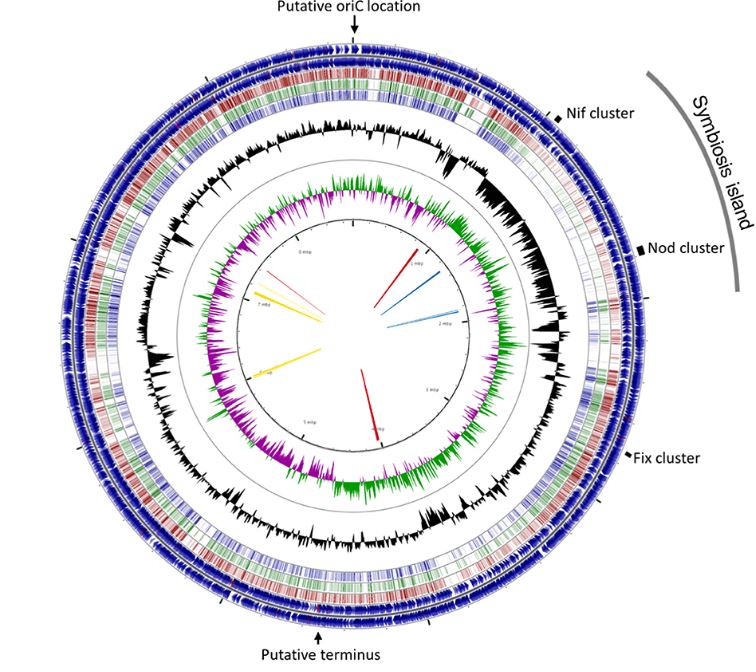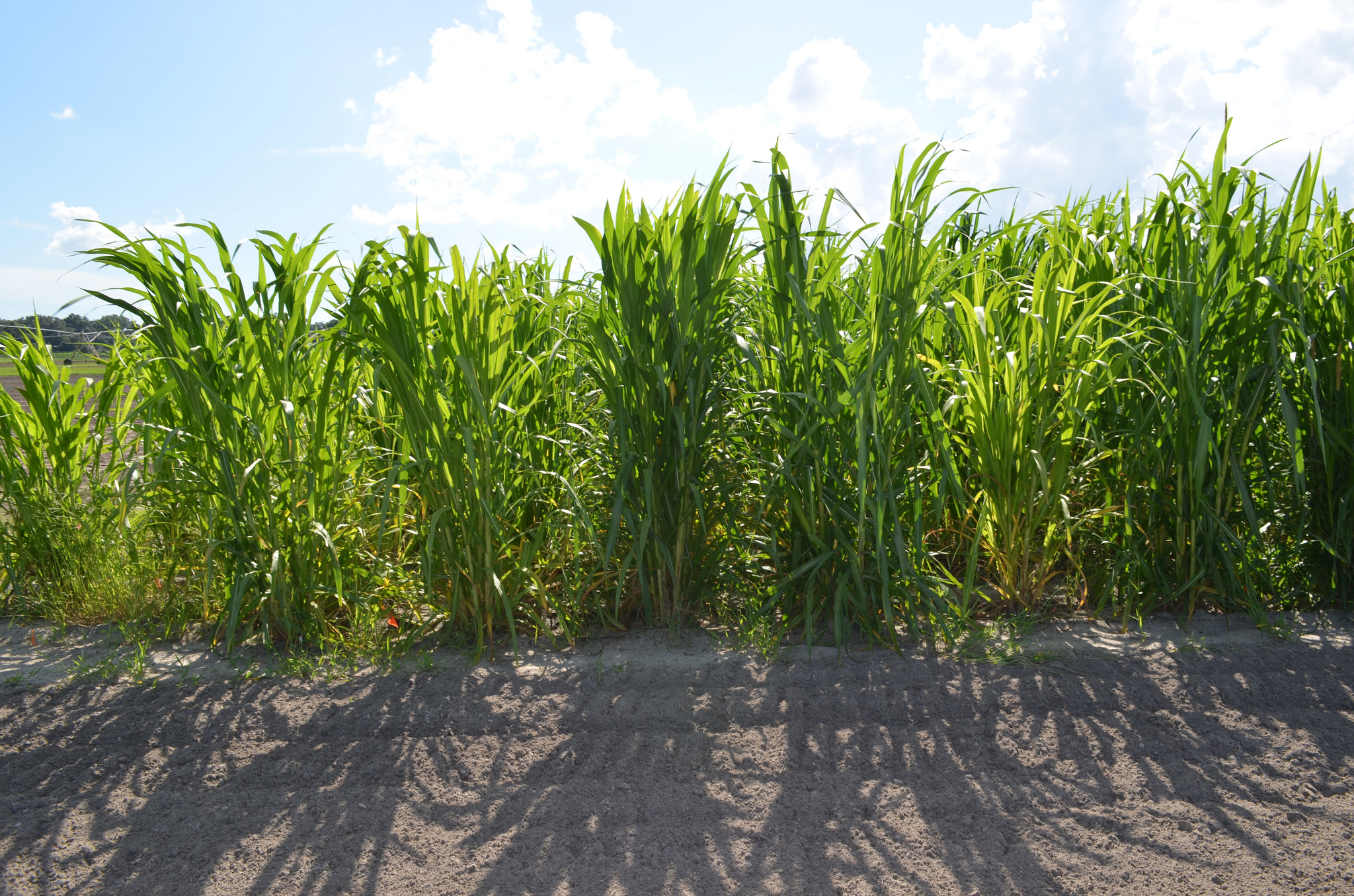Cowpea (Vigna unguiculata [L.] Walp., diploid, 2n = 22) is a major crop used as a protein source for human consumption as well as a quality feed for livestock. It is drought and heat tolerant and has been bred to develop varieties that are resilient to changing climates. Plant adaptation...
[Read More]
Isolation, Characterization, and Complete Genome Sequence of a Bradyrhizobium Strain Lb8 From Nodules of Peanut Utilizing Crack Entry InfectionDev Paudel, Fengxia Liu, Liping Wang, Matthew Crook, Stephanie Maya, Ze Peng, Karen Kelley, Jean-Michel Ané, and Jianping Wang
In many legumes, the colonization of roots by rhizobia is via “root hair entry” and its molecular mechanisms have been extensively studied. However, the nodulation of peanuts (Arachis hypogaea L.) by Bradyrhizobium strains requires an intercellular colonization process called “crack entry,” which is understudied. To understand the intercellular crack entry...
[Read More]
Surveying the genome and constructing a high-density genetic map of napiergrass (Cenchrus purpureus Schumach)Dev Paudel, Baskaran Kannan, Xiping Yang, Karen Harris-Shultz, Mahendar Thudi, Rajeev K. Varshney, Fredy Altpeter & Jianping Wang
Napiergrass (Cenchrus purpureus Schumach) is a tropical forage grass and a promising lignocellulosic biofuel feedstock due to its high biomass yield, persistence, and nutritive value. However, its utilization for breeding has lagged behind other crops due to limited genetic and genomic resources. In this study, next-generation sequencing was first used...
[Read More]
Evaluation of cotton fiber maturity measurementsDev R.Paudel, Eric F.Hequet, Noureddine Abidi
Cotton fiber maturity, degree of secondary cell wall thickening relative to the perimeter, is one of the most important fiber quality and processing parameters of cotton. Immature fibers result in low dye uptake, increased fiber breakage, fabric defects, and waste. Because of that, breeders, cotton producers, spinners, and textile manufacturers...
[Read More]
|
Tweets by devomics |



